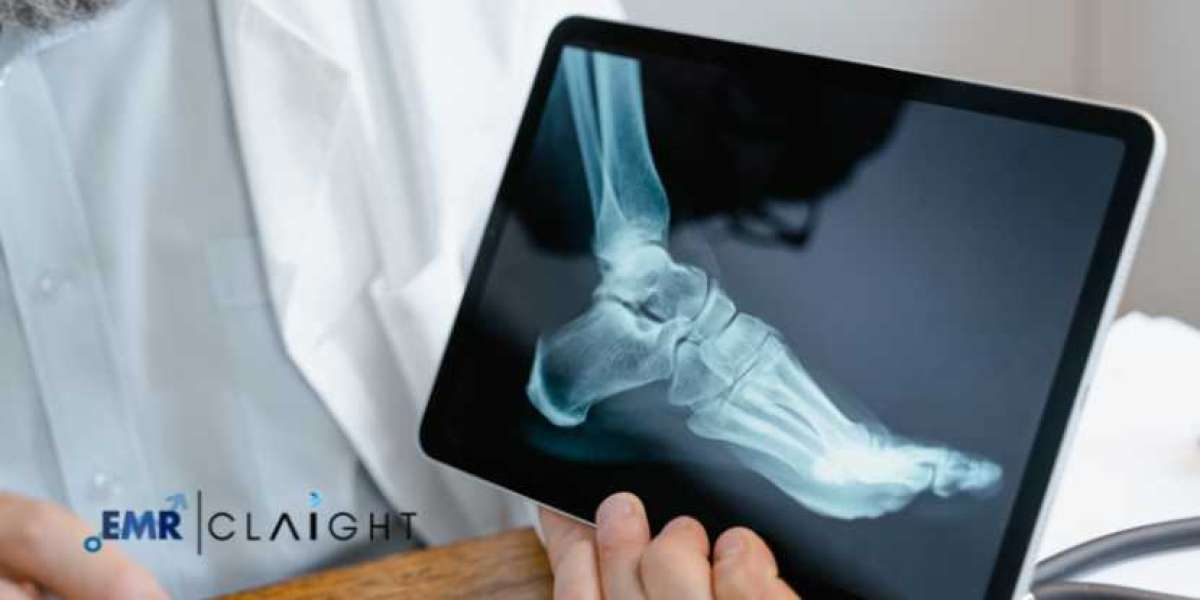The teleradiology market is experiencing rapid growth due to the increasing demand for remote diagnostic imaging services. Teleradiology enables healthcare professionals to transmit radiological images such as X-rays, MRIs, and CT scans digitally for interpretation by radiologists in different locations. The rising prevalence of chronic diseases, advancements in digital imaging technologies, and the growing adoption of artificial intelligence in radiology are key drivers of market expansion. Additionally, the shortage of radiologists and the need for faster, more efficient diagnostic processes are contributing to the increasing adoption of teleradiology solutions worldwide.
Teleradiology Market Size
The global teleradiology market was valued at USD 7.98 billion in 2024 and is projected to grow at a CAGR of 6.40% from 2025 to 2034. By 2034, the market is expected to reach USD 14.84 billion. Factors driving this growth include the rising demand for point-of-care testing, expanding telehealth infrastructure, and increased government support for digital healthcare solutions. Additionally, the integration of AI-based image processing and cloud-based teleradiology platforms is improving diagnostic accuracy and accessibility, further propelling market expansion.
Teleradiology Market Share
North America dominates the teleradiology market, holding the largest share due to advanced healthcare infrastructure, high healthcare expenditures, and the early adoption of telehealth solutions. Europe follows closely, with increasing investments in AI-driven radiology services and government support for digital health transformation. The Asia-Pacific region is expected to witness the fastest growth, fueled by rising healthcare awareness, increasing demand for remote diagnostics, and significant improvements in medical imaging technology. Emerging economies such as India and China are driving market expansion by investing heavily in telemedicine and digital healthcare systems.
Teleradiology Market Trends
AI-Powered Teleradiology – Increasing use of AI and machine learning for faster and more accurate image interpretation.
Cloud-Based Solutions – Adoption of cloud storage for secure and efficient image sharing and archiving.
Rising Demand for Point-of-Care Imaging – Increasing need for remote diagnostics in rural and underserved areas.
Integration with PACS and RIS – Seamless connectivity with Picture Archiving and Communication Systems (PACS) and Radiology Information Systems (RIS).
Expansion of Telehealth Services – Growing reliance on telemedicine platforms to bridge the gap in radiology services.
Teleradiology Market Analysis
The teleradiology market is expanding rapidly due to technological advancements and increasing collaborations between healthcare providers and imaging specialists. The demand for remote diagnostic solutions has surged, especially in the wake of the COVID-19 pandemic, which highlighted the importance of digital healthcare infrastructure. AI and machine learning have significantly improved the speed and accuracy of radiological interpretations, reducing turnaround times and improving patient outcomes. However, data security concerns and regulatory challenges remain key obstacles. Market players are focusing on strengthening cybersecurity measures and developing compliant telehealth solutions to ensure seamless integration with existing healthcare systems.
Teleradiology Market Segmentation
By Modality:
- X-ray
- Computed Tomography (CT)
- Magnetic Resonance Imaging (MRI)
- Ultrasound
- Nuclear Imaging
By Application:
- Neurology
- Cardiology
- Oncology
- Orthopedics
- Gastroenterology
By End User:
- Hospitals
- Diagnostic Centers
- Specialty Clinics
- Ambulatory Surgical Centers
By Region:
- North America
- Europe
- Asia-Pacific
- Latin America
- Middle East Africa
Get a Free Sample Report with Table of Contents
Teleradiology Market Growth
The teleradiology market is poised for substantial growth, driven by the increasing need for remote imaging solutions and advancements in digital healthcare technologies. The growing aging population, rising incidence of chronic diseases, and shortage of radiologists in many regions have led to higher demand for teleradiology services. AI and deep learning technologies are further enhancing diagnostic capabilities, making remote radiology more efficient and accurate. Additionally, increasing investment in healthcare infrastructure and telemedicine initiatives worldwide is expected to accelerate market expansion in the coming years.
Recent Developments and Challenges in the Teleradiology Market
Advancements in AI – AI-driven radiology solutions are improving diagnostic efficiency and reducing human error.
Adoption of Blockchain Technology – Enhancing data security and ensuring the integrity of radiological records.
Strategic Partnerships – Collaborations between healthcare providers and technology firms are driving innovation.
Regulatory Challenges – Compliance with data protection regulations such as HIPAA and GDPR remains a significant challenge.
High Implementation Costs – The initial investment required for setting up teleradiology infrastructure can be a barrier for smaller healthcare providers.
Data Privacy Concerns – Ensuring patient confidentiality and secure data transmission remains a top priority for market players.
Key Players in the Teleradiology Market
The teleradiology market is highly competitive, with several major companies investing in research and development, strategic partnerships, and innovative solutions to strengthen their market presence. Key players include:
AgaMatrix Holdings LLC
Abbott Laboratories Inc.
Biosensors International Group, Ltd.
Medtronic Inc.
Bio-Rad Laboratories Inc.
Pinnacle Technologies Inc.
Ercon, Inc.
Dupont Biosensors Materials
Koninklijke Philips N.V.
Qtl Biodetection LLC
Molecular Devices Corporation
Nova Biomedical
Molex LLC
Zimmer Peacock AS
Siemens Healthcare











